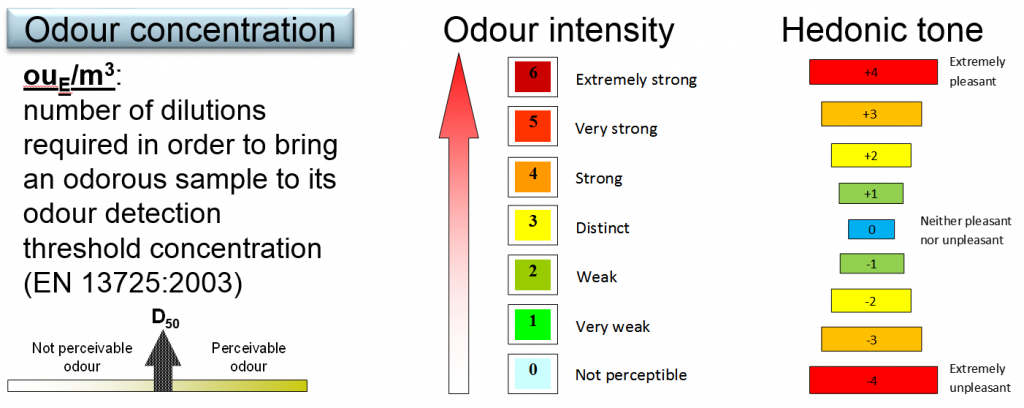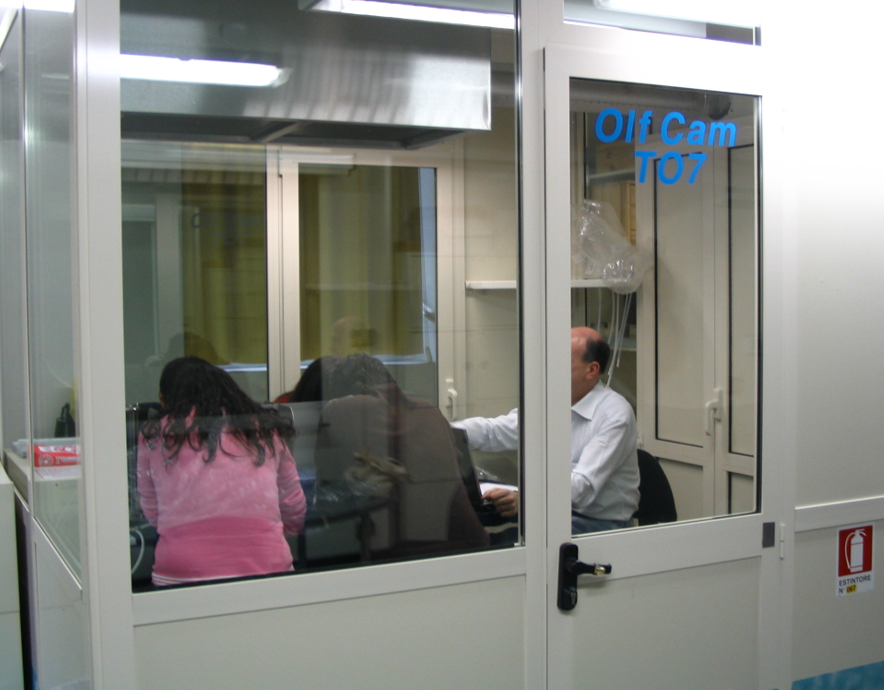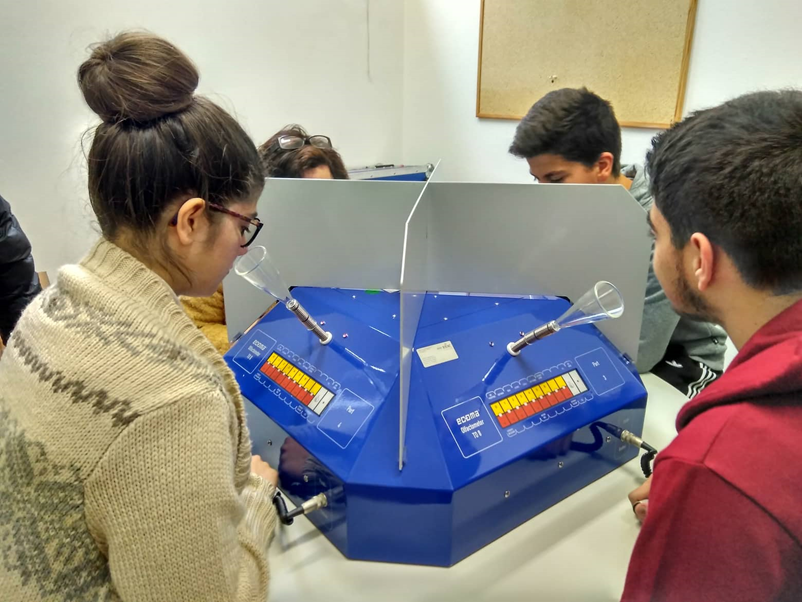Dynamic Olfactometry
What is it?
Samples of odorous air are collected at the source of the odour in suitable bags, then they are analysed by diluting them with fresh, odourless or ‘neutral’ air in decreasing amounts.
The analysis is carried out by presenting the sample to the panel at increasing concentrations by means of a particular dilution device called olfactometer, until the panel members can detect an odour that is different from the reference neutral air. The outcome of this measurement is the odour concentration of the sample, which is expressed in European odour units per cubic meter (ouE/m3) (Figure 1). This represents the number of times the sample has been diluted with neutral (odourless) air to reach its odour detection threshold concentration. Thus, if the sample needs to be diluted 100 times with clean air so that the panel cannot perceive the odour anymore, this means that the sample has a concentration of 100 ouE/m3 .
What can it be used for?
In some cases, odour regulations fix concentration limits at emissions (for instance in the Region of Puglia, Italy). In such cases dynamic olfactometry can be used to ascertain if regulations are being breached.

Figure 1. Odour concentration definition, odour intensity scale and hedonic tone scale
This is currently the preferred way in most countries to evaluate odour impacts caused by different odour emitting activities on the surrounding communities.

What can it NOT be used for?
Dynamic olfactometry is a discontinuous measurement method, since samples are collected at the source in a precise moment and then transported and analysed in a lab. For this reason, it cannot be used to continuously monitor odour emissions.
Dynamic olfactometry cannot be used to gain information about odour quality, thus it cannot identify odours or distinguish between different odours.
Dynamic olfactometry provides information about odour emissions. Thus , it cannot give information about the presence of odours in ambient air (immissions). For this purpose, data from olfactometric analysis should be combined with meteorological and geographical information in a specific dispersion model.

